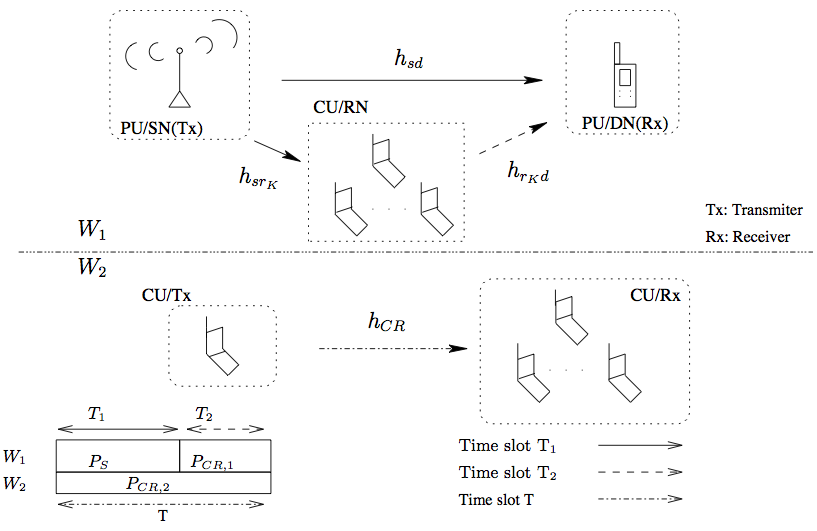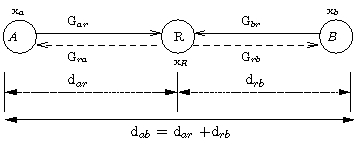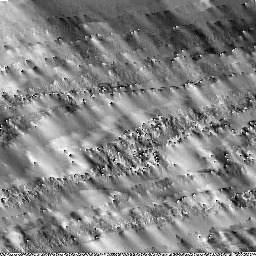You are here
Cooperative Communications
- Cooperative Cognitive Radio
- Two-Way Relaying for Cooperative Communications
- Distributed Turbo Coding Aided Cooperative Communications
- DS-CDMA and SC-FDMA Aided Cooperative Communications
- Differential Cooperative Communications
- Multicource Cooperative Communications and Physical Layer Network Coding
|
Cooperative Cognitive Radio |
|
Cognitive Radio (CR), relying on a software-defined radio, is an emerging technology that enables the flexible development, construction, production, shipping and deployment of highly adaptive radios. The CR mechanism is also capable of exploiting the available spectrum holes in the communication spectrum. If the spectrum is not used by the Primary Users (PUs), then the Cognitive Users (CUs) would have the opportunity to access it for their secondary communications based on the CR technique. According to the CR protocol, the device listens to the wireless channel and identifies the spectrum holes, either in the time or in the frequency domain. [top] |
|
Two-Way Relaying for Cooperative Communications |
|
Two-way or bi-directional relay systems have drawn increasing research attention, since they overcome the potential spectral efficiency loss of conventional one-way relaying scheme. Consider a a simple system which supports two user-terminals acting as Source Nodes (SNs) that want to exchange their information with the aid of a Relay Node (RN). In the conventional one-way relay schemes, four time slots are required for accomplishing a full information exchange. By contrast, two-way relaying requires only two time slots for duplex information exchange. In [1], we invoked the attractive Joint Source-coding, Channel-coding and Modulation (JSCM) scheme in the spectral efficient two-way relaying. After quantifying the achievable capacity of the corresponding two-way relay channel, we employed extrinsic information transfer (EXIT) chart to investigate the decoding convergence as well as for optimizing the power transmission. Furthermore, the proposed scheme were proposed for image transmission where a novel low-complexity source coding were in-cooperated to enable the joint decoding.
(A) First iteration (B) Second iteration (C) Fourth iteration [top] |
|
Distributed Turbo Coding Aided Cooperative Communication |
|
Cooperative communication scheme have been intensively investigated in recent years, which combine the benefits of the MIMO systems with relay techniques and constitute a virtual distributed MIMO system. Inspired by the classic turbo codes used in non-cooperative communication scenarios, Distributed Turbo Codes (DTC) are proposed for cooperative communication network, and resultantly create the technique of Distributed Turbo Coding Aided Cooperative Communication. Distributed Turbo Trellis Coded Modulation scheme, Iteratively Decoded Space-Time Block Coding scheme and so force are applied to cooperative communication network. A near capacity result can be achieved by the incorporate Distributed Turbo Coding aided Cooperative Communication technology. Furthermore, joint source-and-relay mode design procedure significantly mitigate the detrimental impact of imperfect channel condition between source and relay and simultaneously optimize BER and system effective throughput. |
|
DS-CDMA and SC-FDMA Aided Cooperative Communications |
|
It is well-known that signals transmitted over wireless communication channels suffer from fading, which may be efficiently mitigated by exploiting various types of diversity in time-, frequency- and/or space-domain. In wireless communications, spatial diversity is particularly attractive. Recently, cooperative diversity in wireless communication systems with distributed nodes or users has attracted wide attention and research due to it is capable of practically realizing spatial diversity. In practical wireless communication systems, there usually exists multiple-access interference (MAI) among the MTs. Hence, such MAI may exists at the relays as well as at the BS, especially when more than one relays simultaneously forward signals from a same MT node. So, DS-CDMA technique is invoked into our system to cancelate the multiple-access interference and consequently establish the DS-CDMA aided cooperative communication system. The DS-CDMA assisted technology is typically restricted to transmission over frequency-flat fading channels. Naturally, at high bit rates the channel becomes frequency-selective and hence its deleterious effects have to be mitigated. Hence, the SC-FDMA scheme is employed to assist cooperation communications when over frequency-selective fading channels. |
|
Differential Cooperative Communications |
|
In one hand, cooperative communication is capable of forming a virtual antenna array in a distributed fashion. Hence it compose a virtual MIMO system which remarkably benefit form spatial diversity. In other hand, in order to carry out classic coherent detection, channel estimation is required at the receiver, which relies on using training pilot signals. However, channel estimation for an M-transmitter, N-receiver MIMO system requires the estimation of M*N CIRs, which may impose both an excessive complexity and a high pilot overhead. Therefor, in such situations, differentially encoded transmissions combined with non-coherent detection requiring no channel state information at the receiver becomes an attractive design alternative, leading to differential modulation assisted cooperative communication. Based on above analysis, cooperative communication system with aid of differential detection technique obtains the combined advantages. |
|
Multisource Cooperative Communication and Physical Layer Network Coding |
|
Recently, the Cooperative Multiple Access (CMA) channel has attracted substantial research interests, where multiple sources forming a cluster of cooperating nodes communicate with the destination, which is also known as Multi-Source Cooperation (MSC). We proposed an error resilient yet high-throughput non-orthogonal interleaved random STC scheme, which was specially contrived for MSC. In contrast to the uncoded system, we aim for improving the energy efficiency of our proposed MSC framework with the aid of two specifically designed coding schemes, namely SuperPosition Coding (SPC) and a Physical-layer Algebraic Network Coding (PANC) scheme. In contrast to classic time-multiplexing, in the SPC scheme the multiple sources’ information is code-multiplexed in order to generate the superimposed and appropriately rotated composite signal, which results in a high throughput. Thus we will introduce an outer channel-coded SPC-aided MSC arrangement, which will be used as the benchmarker of the proposed PANC scheme. On the other hand, the philosophy |





